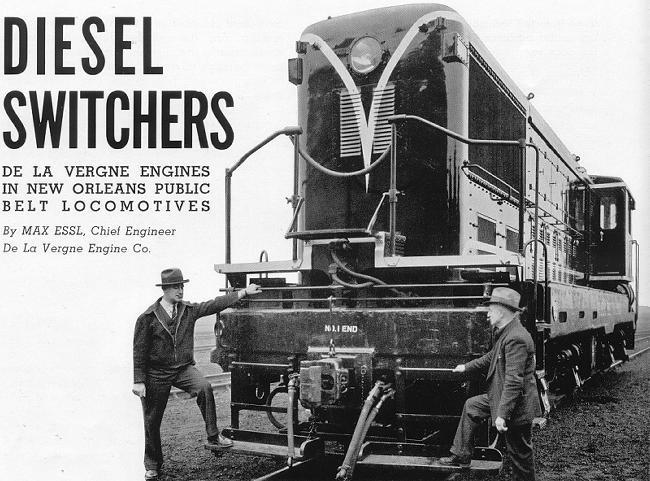 |
|
A MOST interesting installation of Diesel-elec- tric motive power is that on the New Orleans Public Belt Railroad, which recently placed in service three Baldwin Diesels, each of 900-horse- power capacity. These locomotives are used prin- cipally in flat yard and industrial switching; but they also operate in transfer service across the Mississippi River Bridge, the approaches to which, both east- and west-bound, have grades of 1.25 per cent for a distance of 2.4 miles. When han- dling heavy tonnage over the bridge, two of the locomoyives are coupled together, thus providing an 1,800-horsepower unit which is controlled from one cab. When operating as single units there are no restrictions on yard, industrial or wharf tracks, as the locomotives easily negotiate No. 5 turnouts and 30-degree curves. Their performance is satisfactory, and they are much faster, in mak- ing switching movements, than 0-6-0 type steam switchers developing a rated tractive force of 30,000 pounds. |
The new locomotives are generally similar in construction to the 600-horsepower Diesel de- scribed in the October, 1936, issue of BALDWIN LOCOMOTIVES. The maximum tractive force, at 30 per cent adhesion, is 73,800 pounds; on an hourly rating, it is 40,000 pounds at a speed of 5.77 miles an hour, while the continuous rating is 29,500 pounds at 8.94 miles an hour. Each locomotive is carried on two four-wheeled trucks. The truck frames are one-piece steel cast- ings, having air passages through the center pin and bolster to the motor inlet for forced cooling of the motors. All parts of the truck, including the axles, are of heavy and rugged construction to withstand severe service. A special feature of these trucks is that a pair of wheels, with the axle and traction motor, can be dropped into a pit for inspection or repair without removing the |
|
10 |